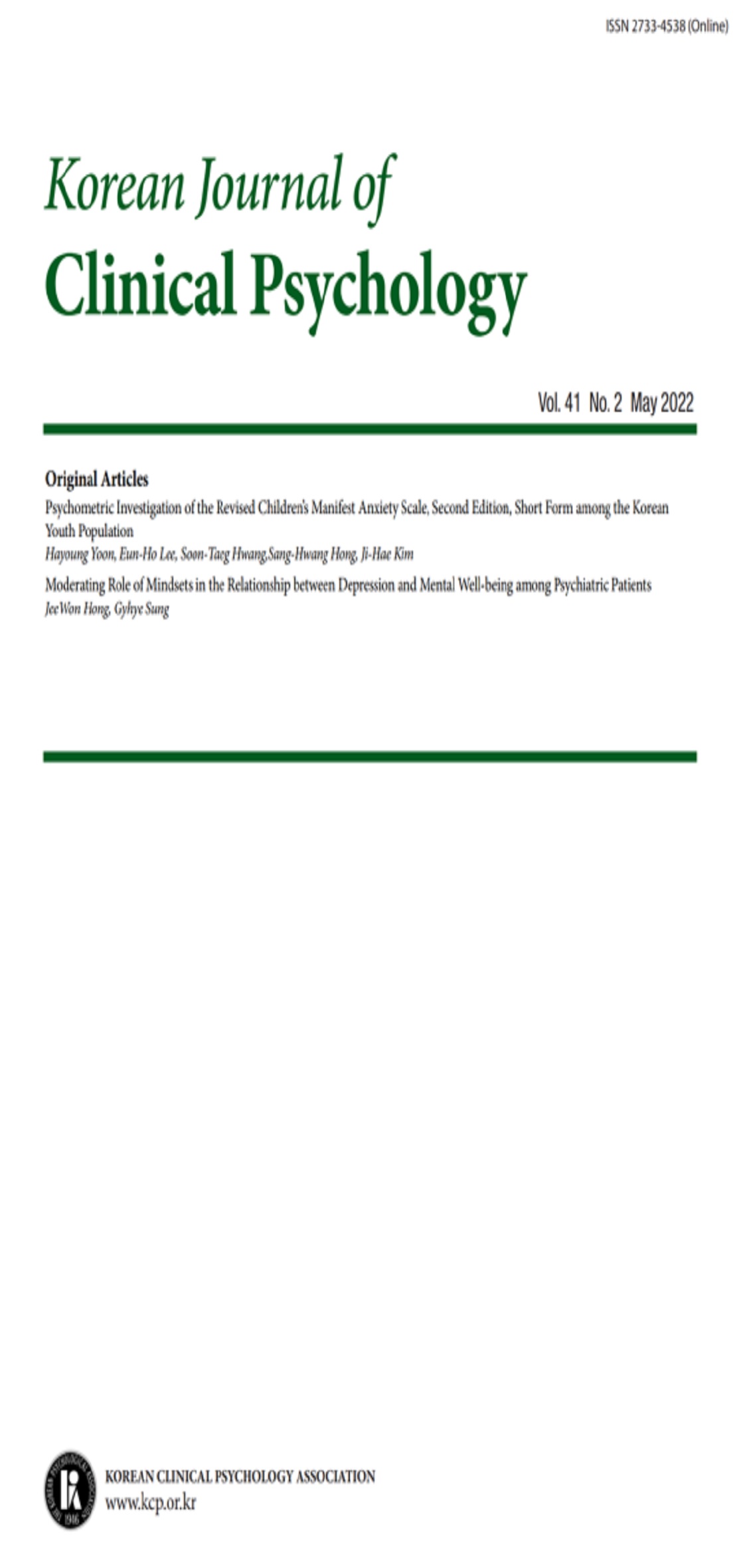open access
메뉴
open access
메뉴 E-ISSN : 2733-4538
E-ISSN : 2733-4538
본 연구에서는 한국판 감정표현 불능증 척도를 개발하기 위해 20문항 감정표현 불능증 척도(20-Item Alexithymia Scale) 문항들을 기초로 예비 연구를 거쳐 23문항으로 구성된 척도를 제작하고, 이 척도의 심리측정적인 특성을 조사하였다. 356명의 대학생 및 65명의 정신과 환자들을 대상으로 연구한 결과 세 요인 구조가 확인되었는데, 요인 1은 정서를 확인하고 정서와 정서 각성에서 오는 신체 감각 간을 구별하는 능력을 측정하며, 요인 2는 외적으로 지향된 사고를 측정하고 요인 3은 정서를 표현하고 타인과 의사소통하는 능력을 측정한다. 각 요인별 신뢰도를 보면 요인 1과 요인 3의 경우, α 계수, 반분신뢰도 계수, 검사-재검사 신뢰도, 문항-총점 간 상관 등이 모두 높게 나타났다. 그러나 요인 2의 신뢰도는 충분히 확보되지 못했다. 특히 정신과 환자 집단에서 내적 일관성 신뢰도가 낮게 나타났다. 척도의 타당도를 보면 요인 1은 SCL-90-R의 신체화 척도, 건강 염려증 척도인 Whiteley 지표(WI)와 상관이 크고, 요인 3은 정서 표현성 척도와 부적인 상관을 보이며 신체화 척도와는 정적인 상관을 보여 그 타당도를 확인할 수 있었다. 또한 신체 증상을 많이 보이는 정신과 환자들이 그렇지 않은 환자에 비해 요인 1과 요인 3 점수가 더 높았다. 그러나 요인 2의 타당도는 확인되지 못했다. 마지막으로 앞으로의 연구방향이 논의되었다.
This study investigated the psychometric properties of the Korean Alexithymia Scale. The scale was based on the 20-item Alexithymia Scale and consisted of 23 items. The scale was administerd to 356 college students and 65 psychiatric patients. The results of factor analysis suggested 3 factor structures. The first factor measures the ability to identify emotion and to discriminate between emotion and somatic sensations. The second factor measures externally oriented thinking. And the third factor measures the ability to express and communicate emotion. Alpha-coefficient, test-retest reliability, and item-total correlation of factor 1 and factor 3 were high for two groups. But internal consistency of factor 2 was insufficient, particularly in psychiatric patients. The concurrent validity and the discriminant validity of factor 1 and factor 3 were high. The correlations of factor 1 with somatization scale of SCL-90-R and WI were high. And the correlations of factor 3 with somatization scale of SCL-90-R and EES were also high. But the validity of factor 2 was insufficient. Finally the implications for future study were discussed.
